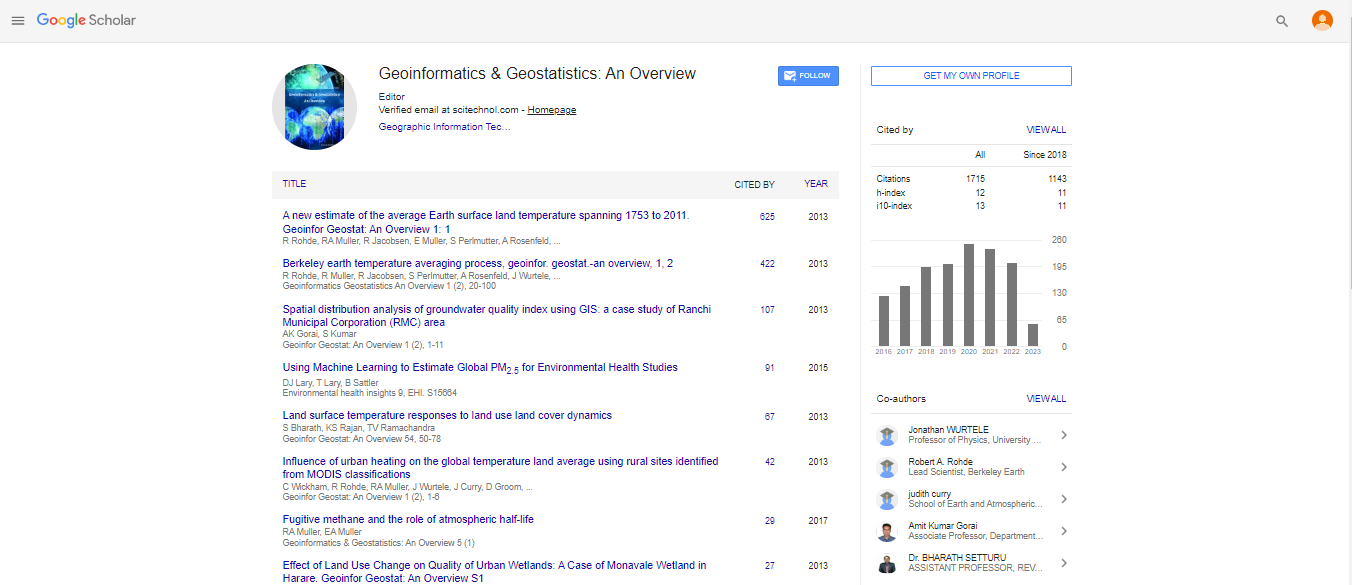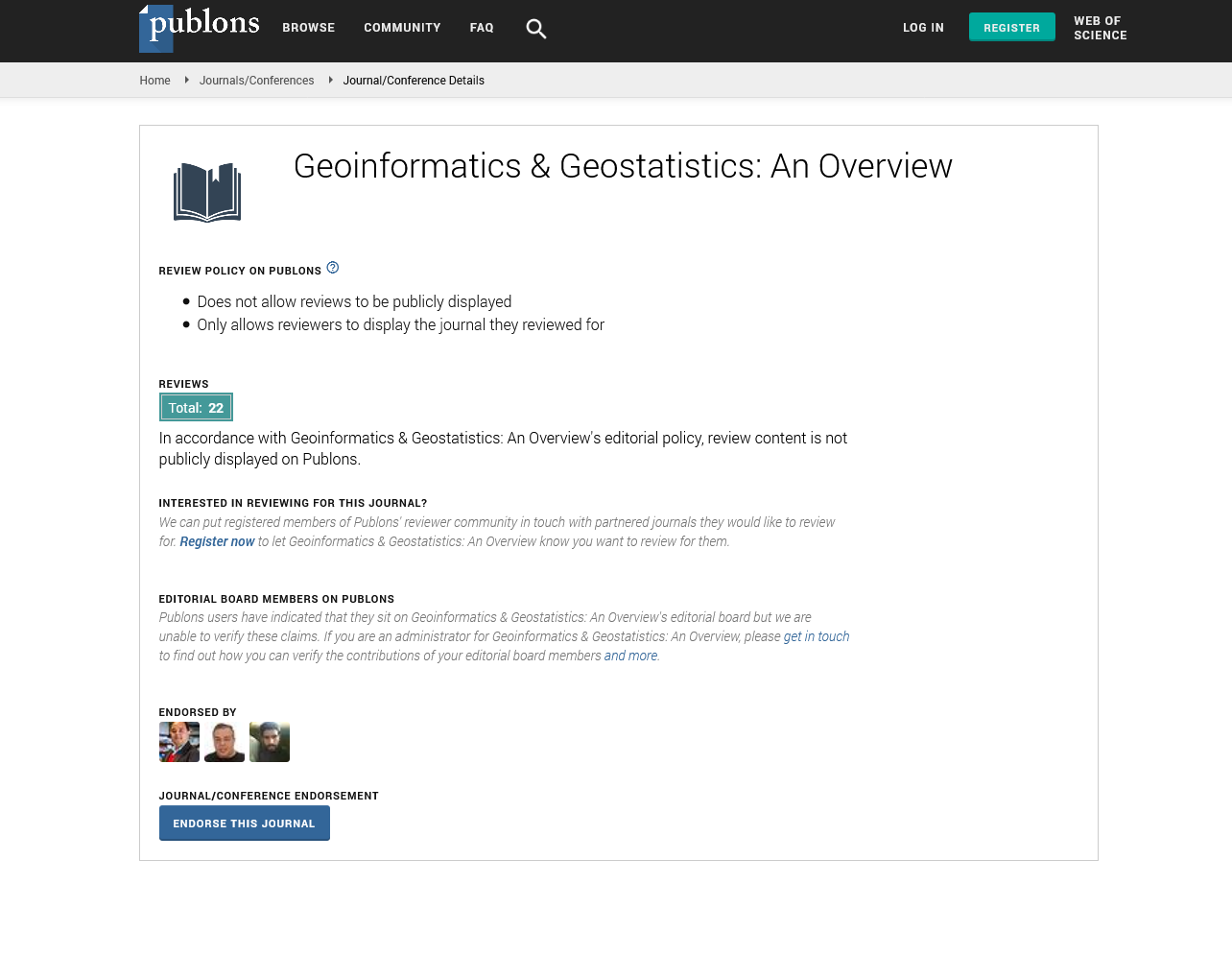Opinion Article, Geoinfor Geostat An Overview Vol: 13 Issue: 1
Strategies for Seismic Risk Reduction in Earthquake-Prone Regions
Shih-Lung Shaw*
Department of Geography, The University of Hong Kong, Hong Kong
*Corresponding Author: Shih-Lung Shaw
Department of Geography, The University of Hong Kong, Hong Kong; E-mail: Shihsl@con.uhk.hk
Received date: 30 December, 2024, Manuscript No. GIGS-25-164063;
Editor assigned date: 02 January, 2025, PreQC No. GIGS-25-164063(PQ);
Reviewed date: 16 January, 2025, QC No. GIGS-25-164063;
Revised date: 23 January, 2025, Manuscript No. GIGS-25-164063(R);
Published date: 30 January, 2025, DOI:10.4172/2327-4581.1000430.
Citation: Shaw SL (2025) Strategies for Seismic Risk Reduction in Earthquake-Prone Regions. Geoinfor Geostat: An Overview 13:1.
Description
Seismic Risk Reduction Strategies
Earthquakes are one of the most devastating natural disasters, capable of causing immense damage in mere seconds. Their suddenness, unpredictability and potential for destruction make them particularly dangerous for densely populated and poorly prepared regions. While earthquakes themselves cannot be prevented, their impacts can be significantly reduced through effective seismic risk reduction strategies. These strategies combine scientific research, engineering solutions, land-use planning, policy implementation and community preparedness. By focusing on reducing vulnerability and increasing resilience, societies can protect lives, reduce economic losses and recover more quickly from seismic events.
Understanding Seismic Risk
Seismic risk is a combination of three factors: hazard, exposure and vulnerability. The hazard refers to the likelihood and intensity of an earthquake occurring in a specific location. Exposure refers to the people, buildings and infrastructure that may be affected by the earthquake. Vulnerability is the degree to which those exposed elements are likely to be damaged or disrupted. Seismic risk reduction, therefore, focuses on minimizing exposure and vulnerability, even in areas where hazards are high.
Modern technology and scientific advances have made it possible to assess seismic hazards with increasing accuracy. Geological surveys, historical seismic data, satellite imagery and seismic monitoring networks help scientists identify fault lines and understand the behavior of tectonic plates. Tools like Probabilistic Seismic Hazard Analysis (PSHA) provide valuable information for engineers, city planners and policymakers to design safer structures and communities.
Earthquake-resistant Infrastructure
One of the most effective ways to reduce seismic risk is by constructing buildings and infrastructure that can withstand earthquakes. In many past disasters, the collapse of poorly constructed buildings has led to the greatest number of casualties. For example, during the 2010 Haiti earthquake, a large number of deaths were attributed to the collapse of unreinforced masonry structures. In contrast, countries like Japan and Chile, which enforce strict building codes, have managed to significantly reduce fatalities during similar magnitude events.
Earthquake-resistant design includes the use of reinforced concrete, steel frames, base isolators and energy-dissipating devices that absorb shock. These engineering techniques help buildings remain standing even during strong tremors. Retrofitting older buildings—especially schools, hospitals and emergency facilities—is also important. Ensuring that these structures meet seismic safety standards can prevent them from becoming hazards themselves during an earthquake.
Urban Planning and Land Use Management
Proper urban planning is another major component of seismic risk reduction. It involves guiding development away from high risk zones such as fault lines, liquefaction-prone soils and unstable slopes. Cities can be designed with open spaces to serve as evacuation areas and emergency shelters. Infrastructure such as roads, bridges and water pipelines should be planned to avoid bottlenecks and facilitate emergency response.
Incorporating seismic risk assessments into building permit processes and zoning regulations helps ensure that new developments are safe and resilient. Land use management also includes relocating vulnerable communities away from dangerous zones. Although politically and socially challenging, such relocation can be a lifesaving decision in the long term.
Early Warning Systems and Technology
Although earthquakes strike without warning, advancements in real-time data processing have enabled the development of Seismic Early Warning Systems (EEWS). These systems detect the initial, less-damaging seismic waves (P-waves) that travel faster than the destructive waves (S-waves) and can issue alerts seconds before strong shaking begins. This short window can be enough to stop trains, shut down power stations, alert emergency services and allow individuals to take cover.
Countries like Japan and Mexico have already implemented nationwide EEWS that have proven effective in saving lives and reducing panic. As these systems become more affordable and accessible, other earthquake-prone countries are beginning to adopt similar technologies.
Conclusion
Seismic risk reduction is a multi-dimensional challenge that demands coordination across science, engineering, policy and society. While earthquakes cannot be stopped, their devastating consequences can be significantly minimized. By investing in resilient infrastructure, enforcing strict building codes, integrating risk assessments into urban planning, promoting community preparedness and leveraging technology, countries can protect lives and reduce economic losses. In an increasingly urbanized and interconnected world, proactive seismic risk reduction is not just a precaution it is a necessity for sustainable and safe development.
 Spanish
Spanish  Chinese
Chinese  Russian
Russian  German
German  French
French  Japanese
Japanese  Portuguese
Portuguese  Hindi
Hindi 
